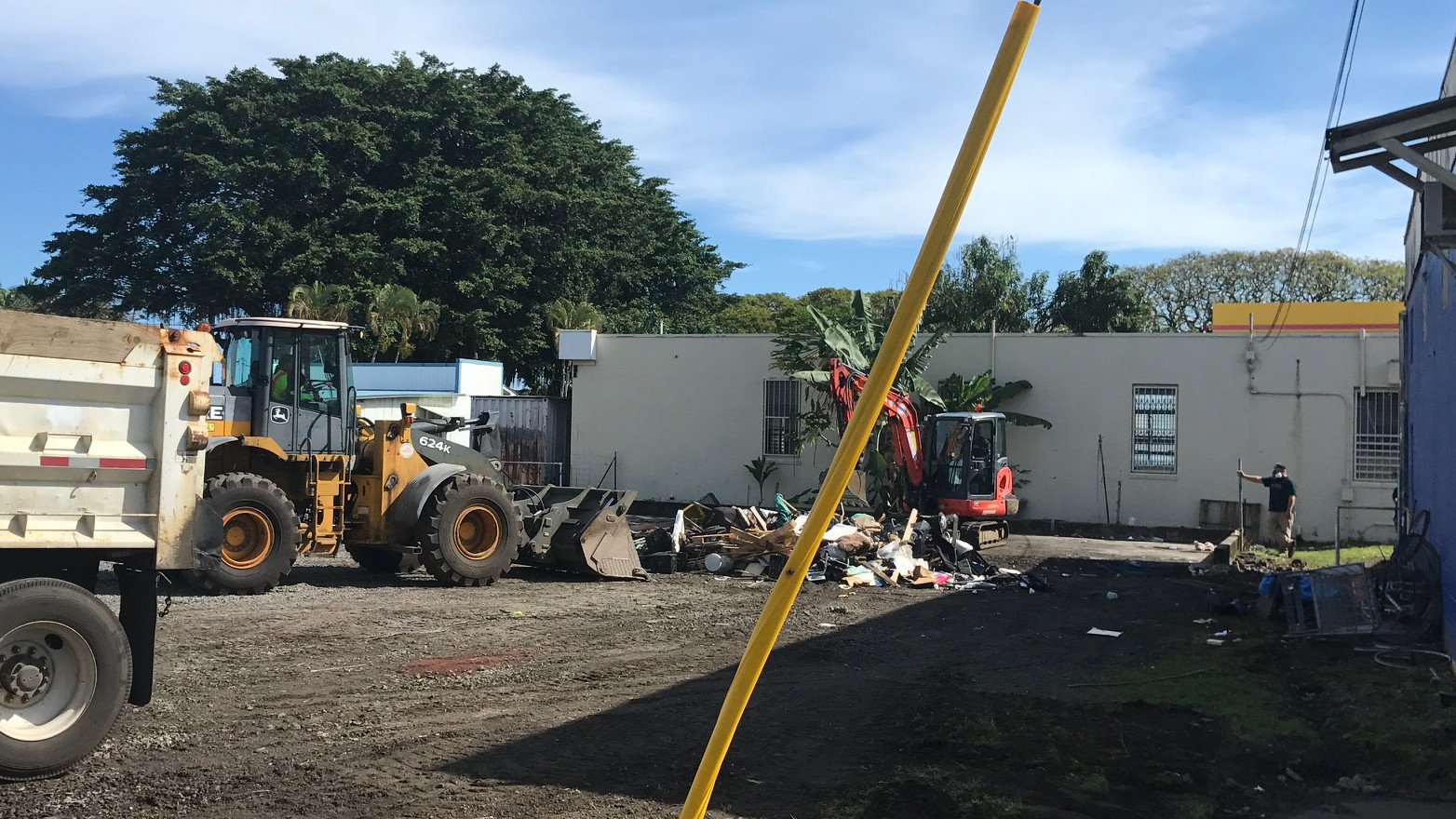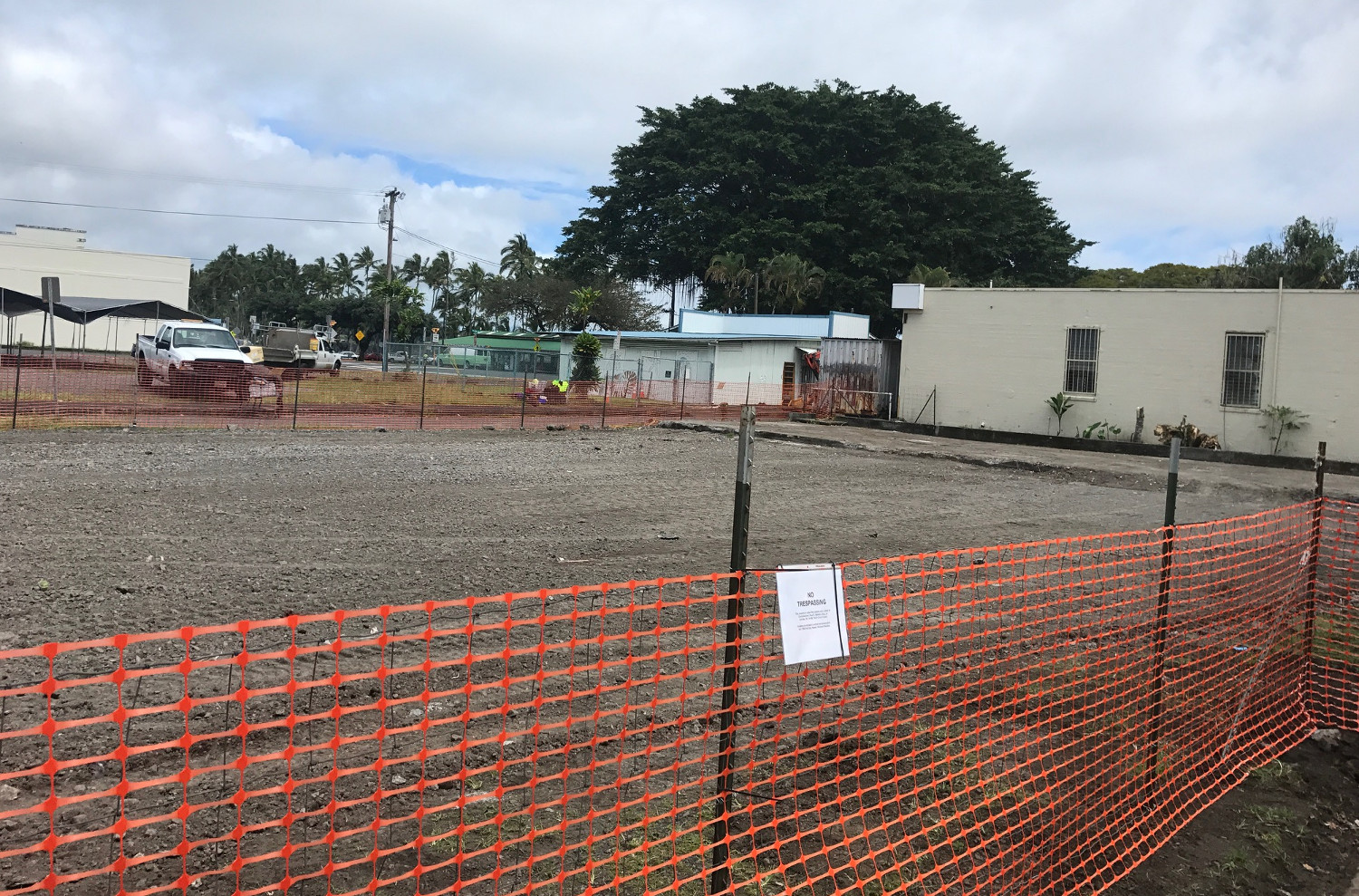(BIVN) – HOPE Services staff and leadership were not in support of the clearing of the Punahoa Street homeless encampment by the County of Hawaiʻi on Tuesday.
HOPE Services Hawaii is a leading nonprofit organization helping people on Hawaiʻi Island avoid and overcome homelessness. Representatives of the service were present in Hilo on Tuesday to assist the county and the police as the enforcement action took place. However, HOPE says those displaced by the action were not provided a relocation option, because the nonprofit’s existing shelter beds are full. HOPE says it could only take in one individual from the encampment.
HOPE Services took to Facebook on Tuesday evening to voice concern over the decision to clear the encampment.
“Let’s just be clear, Hope Services staff & leadership, was and IS NOT in support of the clearing of this encampment,” said CEO Brandee Menino. “We advised the County Mayor’s office that clearing of encampments at this time of COVID-19 is AGAINST the guidance and advice of the CDC. And if the powers at be will do this, then do so with a plan!”
HOPE Services pointed to the Centers for Disease Control and Prevention official guidance on “Responding to Coronavirus Disease 2019 (COVID-19) among People Experiencing Unsheltered Homelessness”. The CDC provides this under “Encampments“:
- Unless individual housing units are available, do not clear encampments during community spread of COVID-19. Clearing encampments can cause people to disperse throughout the community and break connections with service providers. This increases the potential for infectious disease spread.
- Encourage people staying in encampments to set up their tents/sleeping quarters with at least 12 feet x 12 feet of space per individual.
- Ensure nearby restroom facilities have functional water taps, are stocked with hand hygiene materials (soap, drying materials) and bath tissue, and remain open to people experiencing homelessness 24 hours per day.
- If toilets or handwashing facilities are not available nearby, provide access to portable latrines with handwashing facilities for encampments of more than 10 people.
Presenting an alternative narrative to the County’s media release detailing Tuesday’s events, HOPE Services wrote on Facebook:
Mayor Harry Kim made the decision to wake up residents of the camp behind Agasa Furniture in Hilo this morning, with the news that their home would be demolished in 30 miniutes. No relocation plan was given.
Yesterday, our CEO, along with leadership of CAP (Community Alliance Partners, a network organizations providing services to our houseless ʻohana on Hawaiʻi Island) strongly advised members of the mayor’s cabinet to adhere to CDC guidelines that explicitly state:
Unless individual housing units are available, do not clear encampments during community spread of COVID-19. Clearing encampments can cause people to disperse throughout the community and break connections with service providers. This increases the potential for infectious disease spread.
The CAP representatives further advised the mayor’s cabinet that, if the county chose to move forward with plans to sweep, it must provide a relocation plan for residents. Together, they developed a plan to demarcate 12-foot squares under the Bayfront Soccer Fields, open up the bathrooms, and give HOPE Services advance notice of any sweep, so that our staff could assist residents with moving out. The cabinet members agreed to advise the mayor to accept that plan.
This morning, we were as shocked to hear about the sweep as community members have been. Our Outreach Team Lead Carrie Hoʻopiʻi was on her way to Kona when she received the news, and turned around to join our other outreach staff at the camp. There she found approximately 12 HPD officers, 15 county workers, and a bulldozer. 12 of the approximately 15 camp residents were present.
A loudspeaker announced to residents that they had 30 minutes to gather their items and leave. Understandably, most of the residents were shell-shocked. Carrie and her staff helped them to pack and remove as much of their property as possible, but they did not have enough time to get all their belongings. Carrie asked the county workers for an extension, and they granted an additional 15 minutes. Carrie, three other outreach workers, and the residents worked together to remove as many belongings as possible, including items belonging to the three residents who were not present at the time of the sweep. Unfortunately, they could not get everything out.
After the sweep, a few members of the camp were taken in by family, and one person was able to enter our shelter. However, our shelters are already operating at capacity, and squeezing more people in is not an option at a time when we are following CDC social distancing guidelines. While Carrie met individually with each camp resident, exchanging contact information, and encouraging them to stay in touch with us, we don’t know where the remaining residents will go, or if we’ll be able to find them.
Carrie says that in the preceding weeks, her team had visited the camp about three times a week–providing them with PPE (Personal Protective Equipment) and educating them about preventing the spread of COVID-19. She says residents were complying and were willing to follow safety guidelines. She also says that her team had planned to enter the camp and physically help the residents to rearrange their tents in order to maximize social distancing. Unfortunately, these plans were cut short, because of Mayor Kim’s decision to bulldoze their home.
When asked why the residents of the camp became homeless, Carrie replied without hesitation. “For the majority, they became homeless because they can’t afford housing. They all want housing, but just can’t afford it.”



by Big Island Video News11:29 pm
on at
STORY SUMMARY
HAWAIʻI ISLAND - The nonprofit organization took to social media to set the record straight as to its involvement in Tuesday's enforcement action on Punahoa Street.